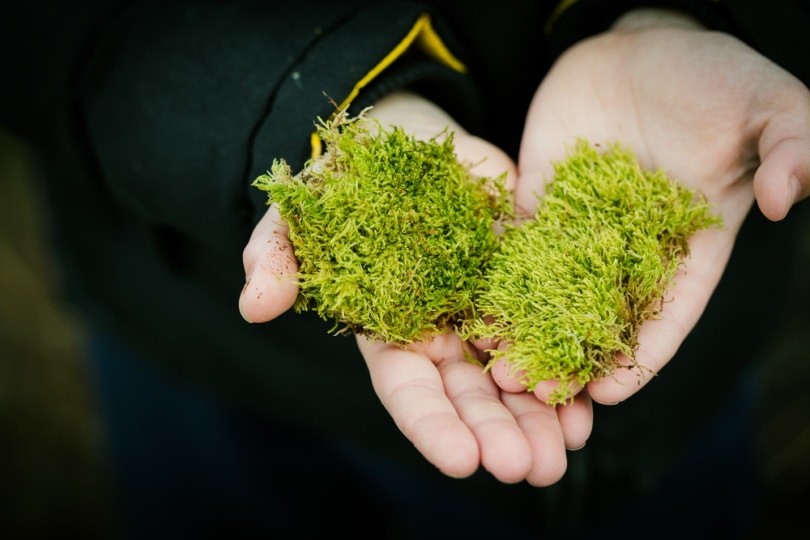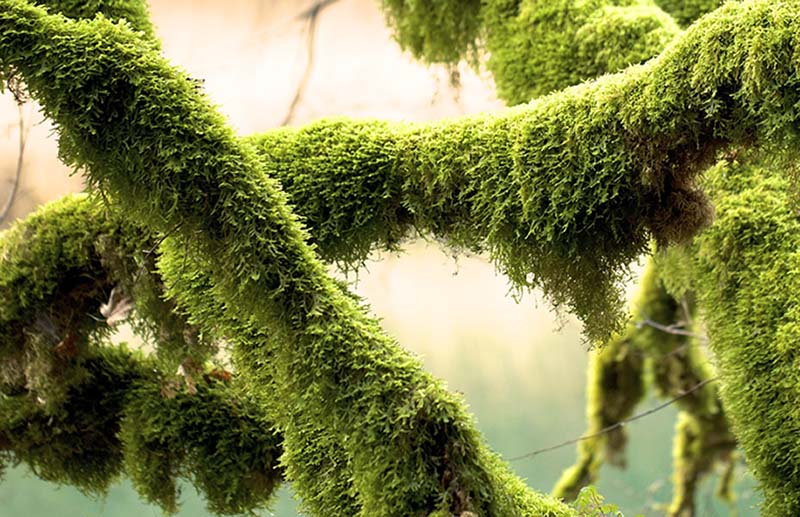Does Moss Have Roots? What You Need To Know!
-
Codee Chessher
- Last updated:

No, moss doesn’t have roots the same way other plants and trees do. Instead, moss has rhizoids, which are fine hair-like filaments produced by the moss to anchor it to a substrate. Rhizoids differ from roots in that they only serve to anchor the moss and don’t transport water or nutrients to the moss.
Instead, the moss soaks up water and nutrients by direct absorption, AKA osmosis. Rhizoids can be very sparse or dense depending on the moss and the substrate it’s attached to. Location matters too—moss on the ground has much easier access to nutrients and water than moss on rocks. Let’s delve more into how rhizoids differ from roots, how moss spreads, and some other interesting info below.
Rhizoids vs. Roots: What’s the Difference?
The difference is that rhizoids are simple filaments that lack a vascular system, so moss is considered a non-vascular plant.1 Roots, on the other hand, have two important components that make this possible. Xylem and phloem, respectively, transport water and organic nutrients within the vascular system of the plant. They also facilitate water and energy storage for the roots.
Because they have nothing in the way of an internal structure, mosses can’t grow as tall as most plants, especially trees. By the same token, they’re much softer and springy than woody, unyielding oak trees.

How Does Moss Spread?
Unlike many plants that can only spread via seed, moss can reproduce or spread through a few different methods. Spores are the most common method, which attach to animal fur, insect wings, etc., or get carried in the wind and so on. When a moss spore lands on a viable substrate like wood, rock, or soil, it germinates into a single filament called a protonema, which absorbs water and nutrients to grow.
The other method is fragmentation, which is when a special piece of moss called gemma breaks off onto neighboring structures. An example would be moss on a tree trunk breaking off to spread onto adjacent branches.
Where Is Moss Found?
Most people probably have a good idea of where to find moss: trees, rocks, and caves, for starters. Few people ever stop to consider why moss is found in those types of places. The prevailing reason is moisture, which is moss’s lifeblood. High humidity is tremendously helpful for moss growth as well, so you may find it growing anywhere there’s moisture.
A few other spots where moss thrives are alpine slopes, tropical rainforests, subterranean caves, swamps, and wetlands. Moss occasionally finds its way onto manmade structures too, provided it’s damp enough.
What about root rot? What does root rot look like on moss? While it is harder for moss to get root rot since it loves such damp environments, it isn’t impossible. You might need to water the moss less if you notice that the bottom of the plant is black and mushy or if the soil is extremely soggy. Other than that, it shouldn’t be a major issue!
Strong sunlight makes moss go dormant, which is why moss likes to hang out underneath other stuff. That said, moss can grow at nearly any temperature. Various species of moss have been found to withstand sub-zero temperatures and temperatures approaching the boiling point of water—212 degrees Fahrenheit! Moss is found in some of the most extreme environments on Earth, and actually dates back millions of years.

How Does Moss Absorb Water and Nutrients?
Two words: capillary action. Capillary action is when an adhesive force is stronger than a cohesive force, like when moss draws water from its surroundings. You’ve probably seen capillary action in action in the kitchen or bathroom, where cohesive and adhesive forces make water behave in some weird ways.
Once the external surface of the moss absorbs the water and nutrients, it’s broken down and fed to the moss’s cells. Moss also absorbs carbon dioxide, which enables photosynthesis! Yes, that’s right—mosses photosynthesize just like other plants! And despite moss’s dislike of the sun, sunlight is also a crucial ingredient for photosynthesis.
It works like this: Moss takes in water, sun, and CO2 to produce sugar and oxygen. The oxygen is “exhaled” by the moss into the air, but the sugar is consumed by the moss to grow and reproduce further.
Conclusion
Moss is a plant like any tree or veggie plant in your garden, although it has simple filament anchors called rhizoids in place of roots. Also, unlike plants, moss can only absorb nutrients from its immediate surroundings by way of capillary action and osmosis. After that, moss undergoes photosynthesis to grow and remove CO2 from the atmosphere.
Featured Image Credit: woong hoe, Pixabay
Contents
